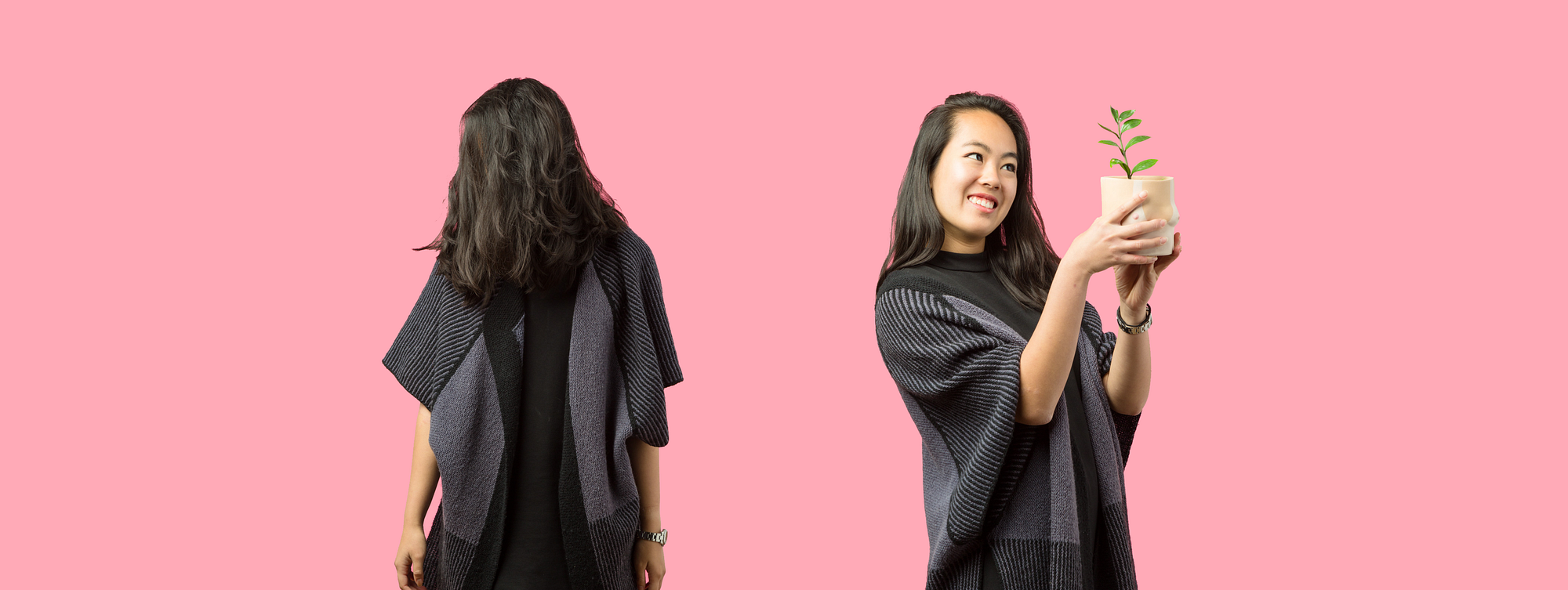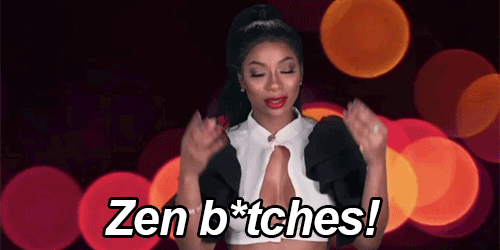Build Design Systems With Penpot Components
Penpot's new component system for building scalable design systems, emphasizing designer-developer collaboration.

medium bookmark / Raindrop.io |
Designer in the Bay Area. Alum @ Cal.

Before vs. after working at Ueno (Photo by Troy Stains)
A few months ago, I started my job as Ueno’s first ever Product Design Apprentice. Stepping fresh out of four years at a large, competitive university, I thought that I always had to be perfect and follow the rules to succeed, and that it was a sign of weakness to make mistakes or show vulnerability among my peers.
Needless to say, I was bit of a nervous wreck during my first few weeks at Ueno. I wasn’t comfortable with adapting to the unpredictability of a young and growing agency, and it was hard to open myself up to the people I worked with.
But over time, I’ve realized that my tendencies to strive for control and perfection were holding me back instead of pushing myself forward. Being hard on myself mentally exhausted me and prevented me from doing my best work.
As I wrap up my apprenticeship, I’d like to share a few things I’ve learned:

I first discovered this when my mentors Carolyn and Steph shared with me an apprenticeship plan during my first week at Ueno. It included tips on how to be a better product designer, clear expectations of the skill level they wanted me to be at by the end of the apprenticeship, and how they would help me achieve these goals. I really appreciated the amount of thought and effort they put into writing this comprehensive plan, especially since I’ve never received anything like it before. But what really stood out to me was a note at the top of the page:
“This a living document, so please treat it as such. Give feedback, add or delete things, and ask lots of questions. Things may be missing, things may be wrong, and things will definitely change and grow as everyone learns more about each other. But don’t worry — it will all be fine in the end.”
It was reassuring to have mentors who wanted to hear what I wanted to learn and offer specific ways to help. But most of all, I was grateful that Carolyn and Steph recognized what they had planned for me wasn’t meant to be perfect or set in stone. By being upfront about not knowing all the answers, my mentors designed a plan that could adapt to changing goals and different definitions of success.
This was the first time where my professional growth was treated as an evolving thing instead of a rigid path with only one definition of success.
Looking back, this gave me the freedom to try new things beyond just UX, like visual design and branding. And because of this, I’ve become a more well-rounded designer.
In the beginning, I struggled with asking coworkers for feedback on client projects. Before joining Ueno, I pressured myself to find all the answers on my own so I could prove to people that I could do things without any help. But Ueno helped me grow out of this mindset, mostly due to our #design-daily channel on Slack, where every day we are reminded to share what we are working on with the rest of the team.


Me every day at 11 am
As an apprentice, I was anxious to show unfinished work to Carolyn, Steph, and the rest of Ueno because I was afraid that they’d judge me and think I wasn’t good enough to work here. But over time, I realized that it wasn’t really a big deal for people to share snippets of early-stage motion studies or rough wireframes because no one roasted each other for the work that we did. Instead, the channel was a valuable resource for getting inspiration, seeing different design processes, and receiving feedback from more senior designers. Some lessons I learned were small things like rounding corner radii appropriately (thanks Gene!) and streamlining my type styles. But I also learned bigger-picture things, like establishing visual hierarchy through type and spacing, and developing visual design in parallel with wireframing the user experience.
Over time, #design-daily became a gateway for me to form meaningful relationships with my mentors and coworkers — people who I initially found intimidating because I had admired their work for a long time. As I posted more of my work-in-progress designs on Slack, I felt more relaxed about going up to coworkers in person and asking for help. And in doing so, I also found that they came up to my desk more frequently to see what I was working on and offer suggestions on how to make it better. Kwok gave me a few books to browse for visual design inspiration, Robin helped me out with some motion studies, and Andrea and Grayden helped me improve my visual skills and get over my long-standing fear of Photoshop. As they helped me more regularly, I slowly began to feel that I was naturally becoming friends with them, because they genuinely cared about me and wanted me to grow.
Ironically, when the pressure of “impressing” my coworkers and trying to “prove” that I deserved to work at Ueno dissolved, I was able to do my best work and grow ten times more as a designer.
In the end, #design-daily brought down the invisible wall of intimidation preventing me from reaching out to the people I worked with, and helped me be more honest about the things I was struggling with.

I was also lucky to have mentors like Steph and Carolyn who were patient enough to let me “bother” them when I needed feedback, or if I wanted to vent about my problems. In particular, having both mentors work on the same project with me made it easier to get more direct feedback and learn faster. (Shout out to Carolyn for flying from New York to the San Francisco office for a month to work on this project!) They could peer over my shoulder and see why I was struggling in the first place, or they were sometimes dealing with the same issues and worked with me to figure it out. Plus, seeing Carolyn and Steph calmly navigate and adapt to the twists and turns that came with our project helped me do the same. Instead of having a detached relationship with my mentors where my designs were evaluated from a distance, I grew closer with them over time. At the end of the day, we were all on the same team, solving the same problems together.
More importantly, the trust I established with Carolyn and Steph in our professional relationship also spilled over into our personal one. Since my mentors were only 2–3 years older than me, they were able to relate to me on a more personal level in comparison to managers I’ve had in the past. During 1:1s, we talked about things like our long-term goals, our fears, starting out in the design industry, navigating our twenties, and dealing with post-grad life. As the weeks went by, I felt myself letting my guard down to form trusting and meaningful relationships with Carolyn and Steph. And because of this trust, I was more willing to listen to advice that would’ve otherwise been difficult to hear.

Finally, I had gotten over my fear of asking for feedback. But it still took me some time to let go of this “right” versus “wrong” dichotomy that influenced the way I worked. One day, Steph pointed out that this way of thinking hindered my overall growth. She observed that whenever I asked for feedback, I cared too much about whether I was designing things “correctly,” instead of asking how I could make my designs better.
“Design isn’t a math problem where there is a right or wrong answer,” she said.
Steph reminded me that she, Carolyn, and the rest of the Ueno team weren’t here to “test my abilities” — instead, they just wanted to get to know the real me and help me develop my skills. She also urged me to stop designing for validation and instead seek constructive criticism from my coworkers. Of course, there are best practices one should follow when designing products — but ultimately, I’ve realized that giving and receiving feedback should be treated like a conversation instead of an evaluation. Unlike in school, things aren’t always going to be black and white in the real world. Instead, there is always going to be a gray area where things are going to be uncertain and ambiguous. It’s hard to not be afraid of it, but I’ve found that life is just easier when you’re okay with it.
Realizing this gave me the freedom to ask for more meaningful feedback, try new things, come up with more creative ideas, produce work faster, and push myself to do things I didn’t think I was capable of doing. For instance, I explored a visual direction on my own during my client project, and I got to own one of the parts of this project from early sketching to final handoff.
Doing an apprenticeship at Ueno was exactly what I needed to grow at such a transitionary time in my life. Sure, Ueno is a super fun and exciting place to work, where people play video games and ping pong after lunch or in between meetings, get free massages every other Thursday, troll on Slack, and of course, produce great work. But more importantly, I was able to receive invaluable mentorship from Carolyn, Steph, and the rest of the team, who are now good friends of mine. As I leave Ueno, I’m surprised to see how much I’ve grown, both in hard and soft skills. And I know that wherever I go in my career, I know that people at Ueno will always be here for me, every step of the way.

Being normal in Iceland (Photo by Troy Stains)
Special thanks to Carolyn Zhang for helping me find the right words (and gifs) for my first Medium post!
AI-driven updates, curated by humans and hand-edited for the Prototypr community